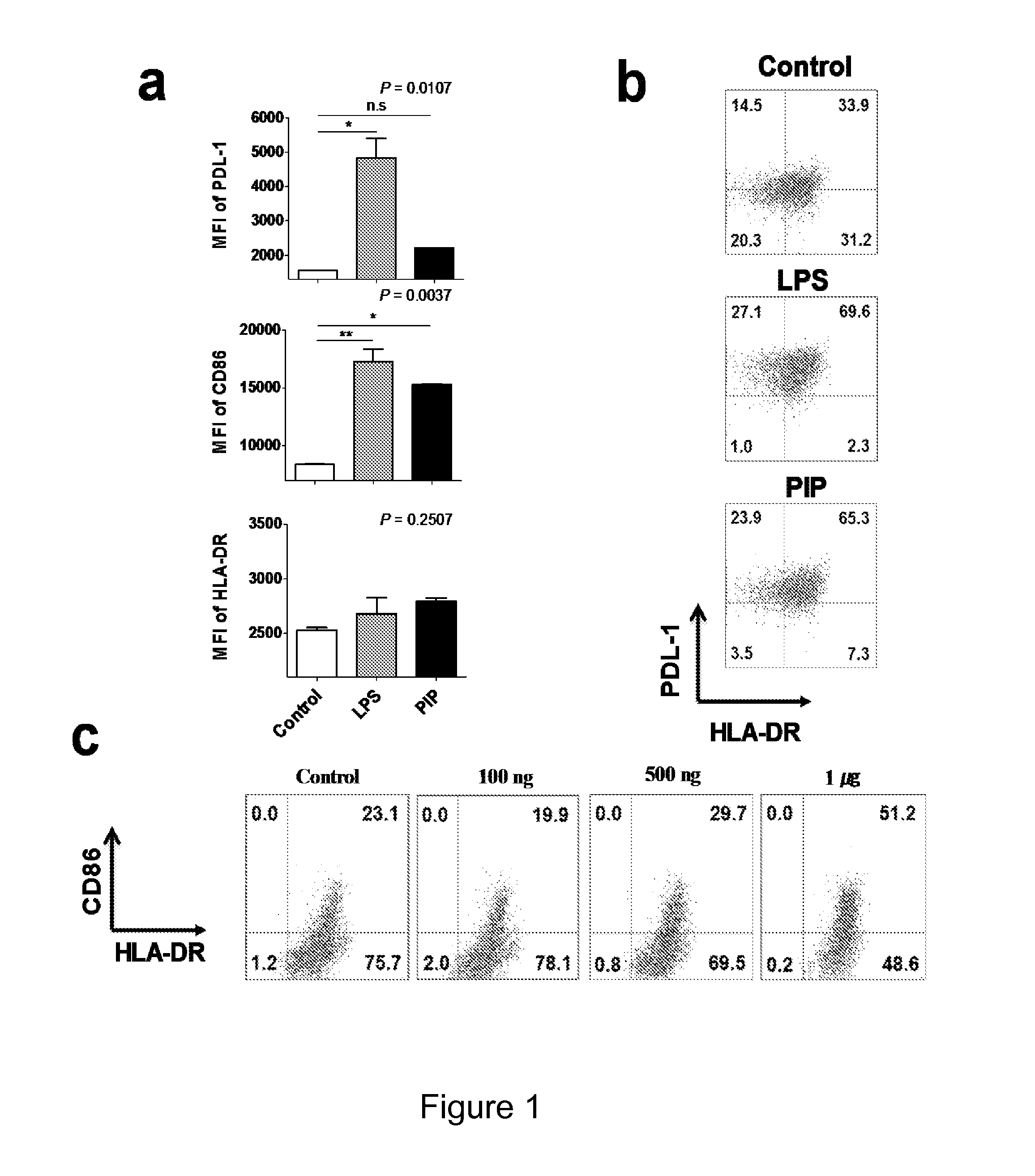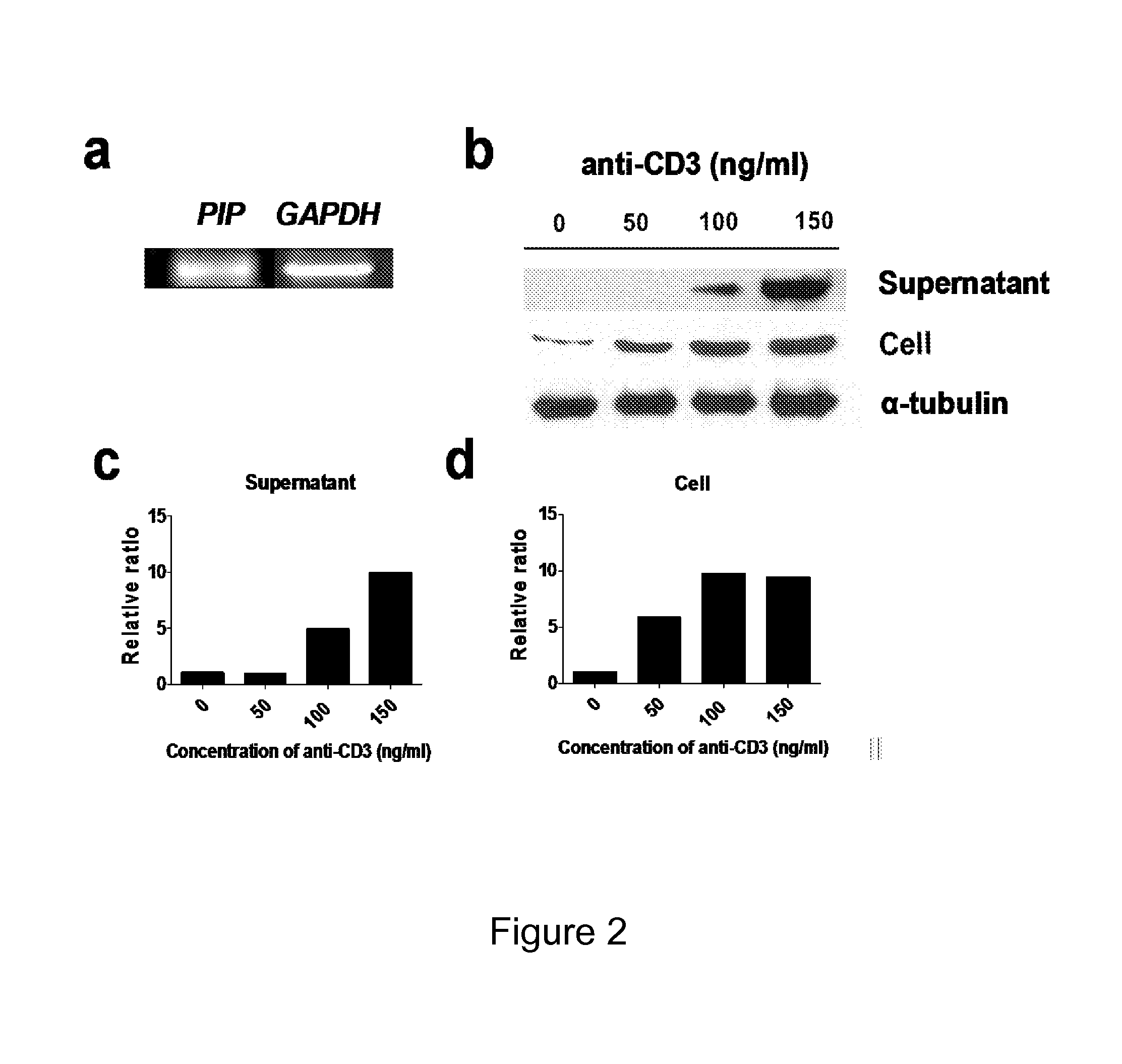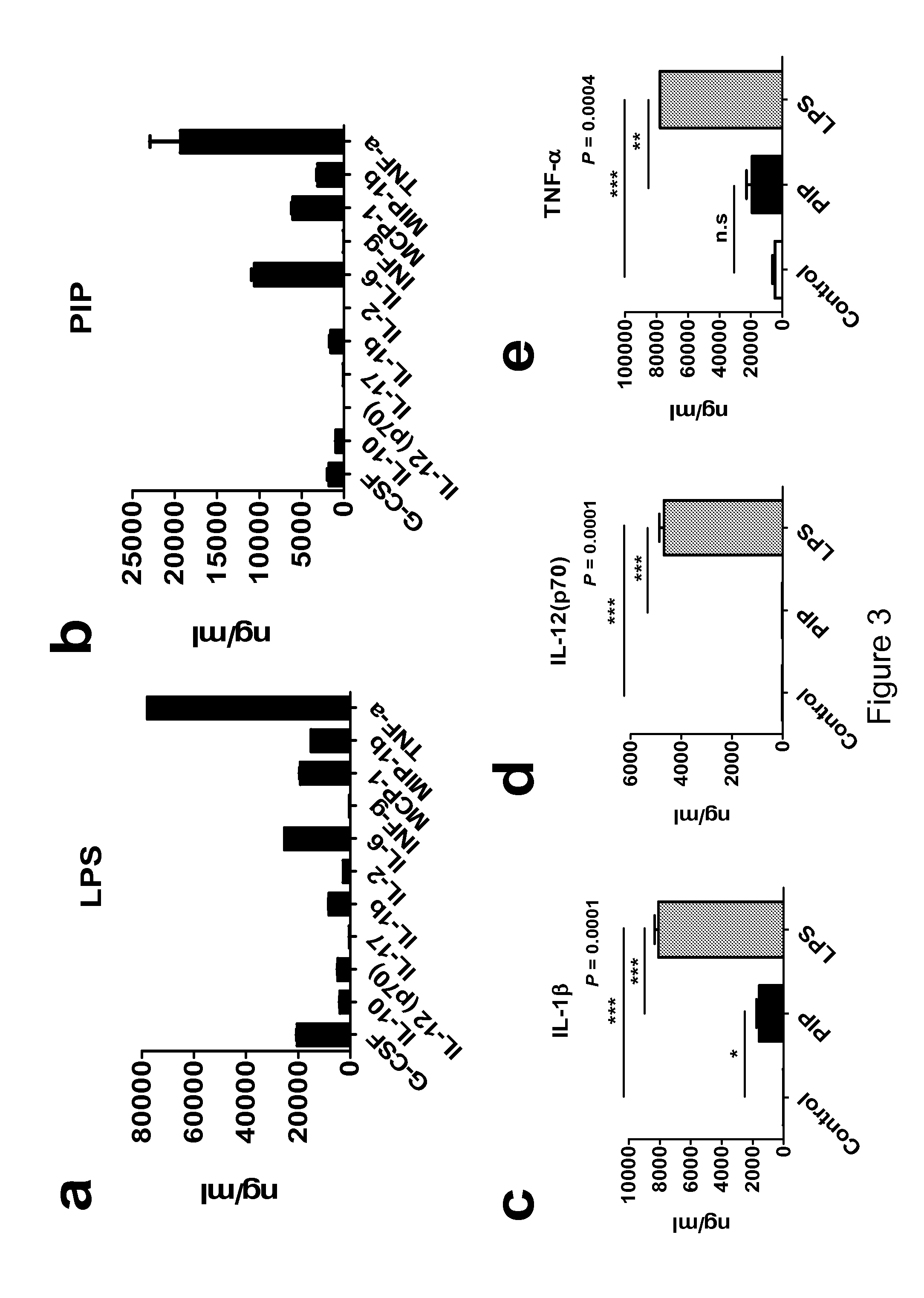METHOD FOR GENERATION OF REGULATORY T-CELLS USING FACTORS SECRETED BY iNKT CELLS
a technology of inkt cells and factors, which is applied in the direction of biochemistry apparatus and processes, immunological disorders, drug compositions, etc., can solve the problems of dc failing to mature normally in both human and rodent autoimmune diabetes, t cell development of pathogenic autoimmune t cells, and poorly understood regulatory effects
- Summary
- Abstract
- Description
- Claims
- Application Information
AI Technical Summary
Benefits of technology
Problems solved by technology
Method used
Image
Examples
example 1
Comparison of the Effect of PIP and LPS on DC Maturation
[0082]PIP showed similar effect on DC maturation as shown by lipopolysaccharide (LPS) (FIG. 1). CD86, HLA-DR, and PDL-1 on the surface of DC were significantly upregulated by both PIP and LPS (FIG. 1a). Compared to phosphate buffered saline (PBS) both PIP and LPS induced significantly more (twice) maturation of immature DC (FIG. 1b). DC maturation effect of PIP was dependent on PIP concentration (FIG. 1c).
[0083]Gene expression of PIP in CD4+ iNKT cells was confirmed by reverse transcriptase-polymeric chain reaction (RT-PCR) (FIG. 2a). It was also verified both in the supernatant and the cells by western blot. In the supernatants, expression levels of PIP was increased according to the concentration of anti-CD3 antibody (FIGS. 2b, 2c, and 2d). When the supernatant of DC matured by LPS or PIP were analyzed it was found that IL-4, IL-5, IL-7, IL-8, IL-13, and GM-CSF were not detected in both the groups, i.e. DC stimulated by LPS a...
example 2
PIP Signaling for DC Maturation
[0084]The generation of Treg cells by CD4+ iNKT cells is intriguing because it offers an explanation for the immunoregulatory functions of iNKT cells in inflammatory diseases. Therefore, CD4+ iNKT cells may regulate the differentiation of pro-inflammatory TH1 and TH17 cells by generating Treg cells.
[0085]Recombinant PIP recapitulates function, and both purified and recombinant induction of DC differentiation is blocked by anti-TLR2 but not by anti-TLR1, 2, 4, 5, 6, 9 antibodies and anti-RAGE antibody. Interestingly, PIP induced CD4+CD25+Foxp3+ T cells (Treg) from naïve T cells and reduced TH1 and TH17 cells produced by Pam3CSK. Therefore, PIP is a strong factor by which iNKT regulate immune response through TLR2.
[0086]The inclusion of PIP and Pam3CSK4, synthetic bacterial lipoprotein-TLR2-TLR1 ligand, treated DC with CD4+CD25−Foxp3− T cells significantly suppressed the differentiation of TH1 and TH17 cells (FIG. 7). These data indicate that CD4+ iNKT c...
example 3
CD4+ iNKT Cell Induces Dendritic Maturation
[0087]iNKT cells were isolated from peripheral blood mononuclear cells (PBMC) of healthy volunteers using 6B11 antibody and microbead conjugated anti-IgG1 antibody. CD4+ and double negative (DN) iNKT cells were separated with CD4 microbead (FIG. 10). To prepare the supernatant of anti-CD3 antibody activated CD4+ and DN iNKT cells, the cells were washed with RPMI 1640 medium three times and applied onto 100 ng / ml anti-CD3 bounded plate and then cultured with 50 U / ml of IL-2. Supernatants were collected and added to immature DC. Immature DC were induced from monocytes, freshly purified from human peripheral blood by CD14 magnetic sorting and incubating with granulocyte-macrophage colony-stimulating factor (GM-CSF) and IL-4. After 48 hours, the surface markers, HLA-DR and CD86, were measured by FACS. Those markers were much more upregulated by adding the supernatant of CD4+ iNKT cells (iNKT 27 and iNKT 67) compared to adding the supernants fro...
PUM
| Property | Measurement | Unit |
|---|---|---|
| pH | aaaaa | aaaaa |
| pH | aaaaa | aaaaa |
| pH | aaaaa | aaaaa |
Abstract
Description
Claims
Application Information
 Login to View More
Login to View More - R&D
- Intellectual Property
- Life Sciences
- Materials
- Tech Scout
- Unparalleled Data Quality
- Higher Quality Content
- 60% Fewer Hallucinations
Browse by: Latest US Patents, China's latest patents, Technical Efficacy Thesaurus, Application Domain, Technology Topic, Popular Technical Reports.
© 2025 PatSnap. All rights reserved.Legal|Privacy policy|Modern Slavery Act Transparency Statement|Sitemap|About US| Contact US: help@patsnap.com



